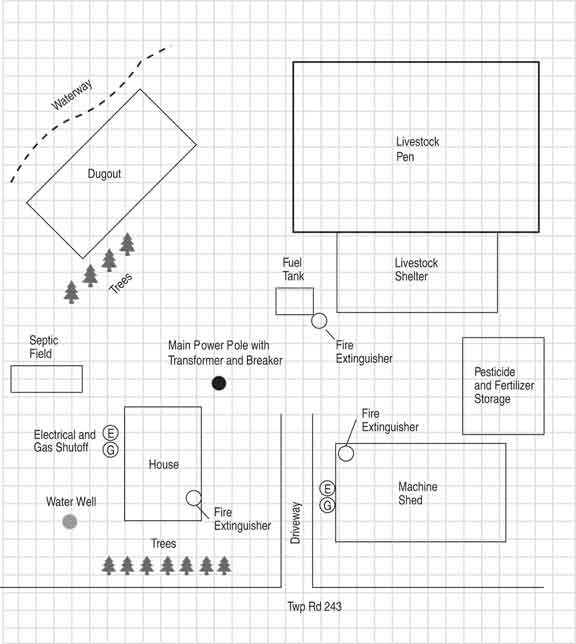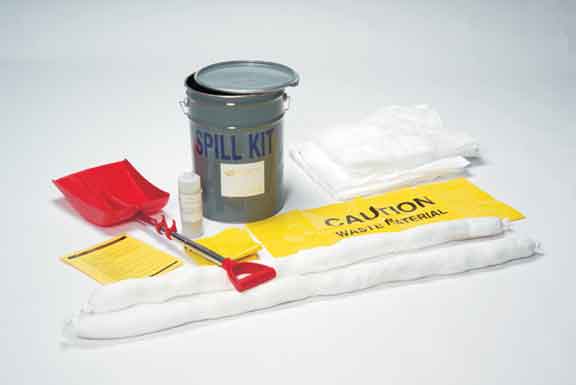| | Mapping out your farmstead site may be a good first step to identifying potentialy hazardous areas (see Figure 22). The following diagram outlines where all buildings are located in proximity to roads, dugouts, fuel tanks, corrals or animal shelters. Main power poles with transformers and breakers should also be included. In addition, be sure to include anything that can become a hazard on the map:
- compressed gas storage (oxygen, acetylene and air tanks)
- fuels and oils
- electrical, gas and water shutoffs
- water well locations (including abandoned and unused wells) and water sources (including dugouts)
- fertilizer and pesticide storage, as well as mixing and loading areas
- compost and manure storage areas
- farm waste storage areas
- septic systems
- fire fighting equipment such as fire extinguishers

Figure 22: Example of a farmstead map as part of an emergency plan
Rural Emergency Plan
The Rural Emergency Plan (REP) is a safety program launched by the Alberta Environmental Farm Plan Company and the Alberta Fire Chiefs Association. It is aimed at protecting rural landowners, their families and emergency personnel in the event of a fire or other emergency. The REP includes a farmstead site map, a list of special considerations for your farm, a inventory of hazardous goods, a list of emergency equipment and supplies, a site runoff map, emergency contact information, and a watertight containment tube. REP templates and forms can be obtained by contacting your local fire department, or visiting the website, AlbertaEFP.com.
Spill Kit
An emergency spill kit can be purchased through various emergency and safety supply centres or you can build it yourself.
The main components of a spill kit should include:
- Personal Protective Equipment (PPE). Includes gloves, eye protection, Tyvek suit, etc.
- Hydrocarbon absorbent. Various types are available, depending on the intended use, but one that won’t absorb water is recommended. These are available in loose form or prepared into absorbent “socks”.
- Warning or caution labels and signs
- Emergency procedures
- Shovel
- Eyewash kit

Figure 23: Emergency spill kit
Photo courtesy of Alberta Environmental Farm Plan Company
Source: Agdex 769-1. September 2008. |
|